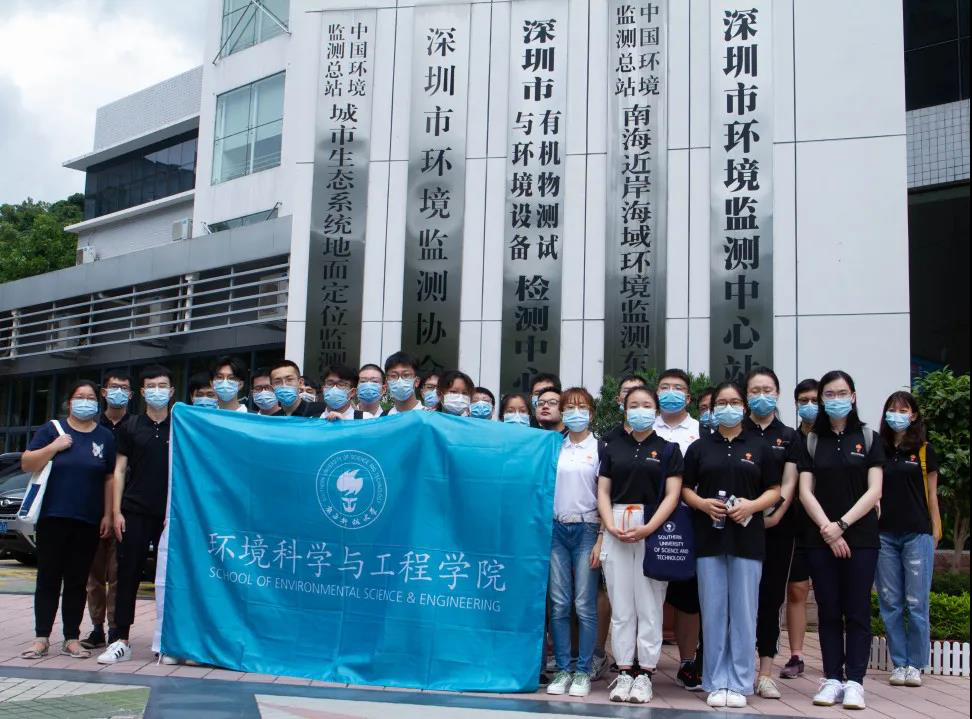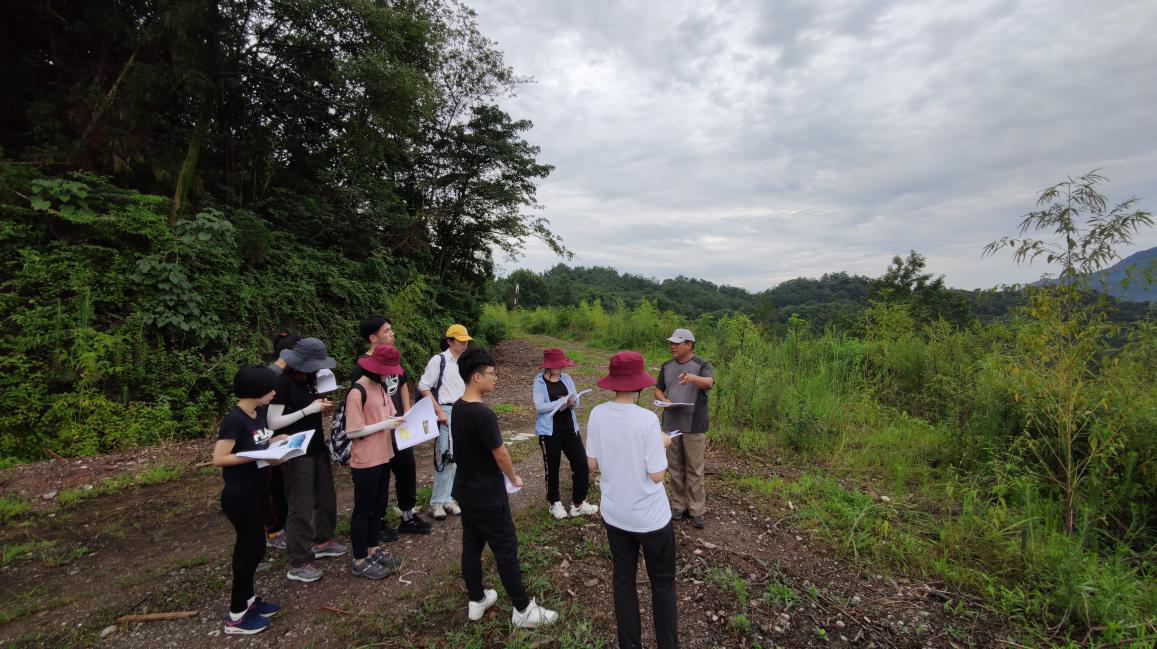Water, air, and soil are three natural resources that we cannot live without. However, the Industrial Revolution in the middle of the 1700s changed how we created everything and impacted the environment.
To address the most pressing issues of our time, caused by water pollution, air pollution, climate change, and so on, requires perspectives from a diverse set of scientific disciplines. Thus, Environmental Science and Engineering emerged to respond to human-induced environmental change. Today this discipline provides an integrated, quantitative, and interdisciplinary approach to the study of environmental systems.
The School of Environmental Science and Engineering of SUSTech (“ESE or the School”) has been working on those environmental problems. On the fifth anniversary of the School, we have an opportunity to talk to Prof. Xin YANG, the new Dean of ESE.

Take the problem-based learning for student’s education and research training
Prof. Xin YANG serves as the Distinguished Professor of the Ministry of Education of China and the Chair Professor at SUSTech. He was also awarded the State Council Expert for Special Allowance as an expert in atmospheric chemistry and air pollution.
YANG’s research interests include atmospheric aerosol’s physical and chemical properties and their impacts on human health and global climate, urban air quality, and instrument development on environmental analysis. PM2.5 is also one of Prof. YANG’s main study areas.
He studied chemistry as his undergraduate major. Then, he earned his master’s degrees in the molecule and the clustering laser spectroscopy research. During his post-doctoral study at Washington State University and Pacific Northwest National Laboratory, he researched atmospheric chemistry. This area is more connected to our daily life.
“ To embark on the journey of environmental science and engineering study seems like a natural choice for me,” Prof. YANG recalled, “My college education is quite different from my current research areas, and I have been through a lot of academic training and practices.”
“I changed my study areas, for I want to solve the environmental problems. Those are tightly bound up to everyone,” Prof. YANG said.
Being a researcher means to solve problems. Nature has its way of balancing, and understanding and addressing environmental issues requires interdisciplinary research.
So, as for the students, choosing their first major is only the one step in the path, and they need to expand more and move to a higher level. They will form various distinctive ways to see and explore the universe.
YANG encouraged the students to pursue their interests and said, “Try to find out what you love and what your strengths are. To improve your perseverance, and to stimulate the curiosity to enhance your learning.”

Tackle today’s most complex environmental problems
The quality of the faculty will be a critical component in developing the disciplines. ESE has developed a high-quality talent pipeline with 69 full-time faculty members. Among them are members of the National Academy of Sciences (United States), Royal Academy of Engineering, the American Geophysical Union, four recipients of the National Outstanding Young Science Fund, four experts from the State Council Special Allowance, three recipients of the National Excellent Young Science Fund and 13 recipients from other national talent programs.
In Prof. YANG’s view, the construction of first-class disciplines requires both a first-class faculty team and the ability to address today’s most complex environmental problems, including the cutting-edge research programs and the environmental issues the people’s daily life and social development. The School will make full use of its advantages and strive to build a first-class academic discipline in environmental science to develop advanced technologies to meet urgent societal needs.
At present, the School has formed three major discipline clusters, which are “Environmental Science and Engineering Technology,” the “Water Resources and Water Environment,” and the future-oriented disciplines-” Sustainable Development and Global Environmental Change. “
“At present, we are focusing on major national strategic and societal needs, seizing the opportunities driven by the favorable policies of the Greater Bay Area and Shenzhen, and developing our disciplines through on four major approaches.” Prof. YANG claimed.
They are “ultra-low emission “method, which turns waste into resources; “ecological restoration” technology, which promotes ecological restoration of the entire river basin or region from the perspective of sustainable development; “environmental health and human health,” the researchers will integrate environmental study with life science and medicine research to ensure the life, health, and safety of the human being; “smart environmental protection,” which uses big data to help solve environmental problems.”
In the past five years, the School has witnessed remarkable academic achievements. More than 200 projects have been conducted, including “Cooperation in the Internationally Strategic Innovative Science and Technology” and other major and critical research and development projects funded by National Natural Science Foundation and other ministries.
The School owns seven major research platforms: State Environmental Protection Key Laboratory of Integrated Surface Water-Groundwater Pollution Control (the first ministerial/provincial level key lab at SUSTech), Guangdong Provincial Key Laboratory of Soil and Groundwater Pollution Control, Guangdong Provincial Research Center for Soil and Groundwater Pollution Control and Restoration, the Key Laboratory of Soil Waste and Groundwater Pollution Control of Shenzhen City, Key Laboratory of Municipal Solid Waste Recycling Technology and Management of Shenzhen City, Shenzhen Municipal Engineering Lab of Environmental IoT Technologies and Shenzhen Institute of Sustainable Development. Now, the research programs have been moved forward with technological support from the platforms.
The next generation of environmental scientists is trained here
As the new Dean, Yang feels refreshed in such a young university full of passion and energy. In his eyes, the University’s culture complements the innovative spirit of Shenzhen. The students and faculty members here share the same spirit. “The University values talents and provides comprehensive support to us. That is what I desire for a good university. Everyone is devoted to their study and career. I like it.” he said.
The School is to cultivate future leading scientists with interdisciplinary backgrounds, global visions, hands-on skills, and creative minds. “Environmental science and engineering is a discipline that involves other sciences like chemistry, physics, biology, etc.,” YANG said.
For interdisciplinary education and research, how to design the curriculum is a big challenge. The courses need to cover a broad range of knowledge and focus on some specific areas’ depth. Prof. YANG draws lessons from many top environmental science departments and schools at home and abroad. Now he has begun to improve the programs by introducing more professional and general courses to broaden the students’ vision and deepen the minds.


The School offers project-oriented courses, such as the “Creative Design” tutored by Prof. Qing HU and “Theory and Practice of Environmental Management in China,” conducted by Prof. Yurong GUO.
The “Creative Design” course will invite professors on and off the campus. The students will be tutored on defining a problem, working out solutions, starting a brainstorming meeting, and practicing a project. Students will learn project management, time management, teamwork, analysis, innovative and critical thinking.
Experts and government officials from related areas will join the “Theory and Practice of Environmental Management in China” course. It involves fieldwork and investigations, enabling students to be familiar with water resource protection, environmental monitoring, waste disposal, and environmental management experience and broaden their problem-solving horizons.
The School has cooperated with the University of Michigan and the University of Queensland in undergraduate and master’s degree programs, with the University of Hong Kong, University of Birmingham, and other universities in joint doctoral degree programs.
Students also have opportunities to participate in practicums and programs overseas in the summer semester. It is a program for the prevention and control of soil and groundwater pollution in the US. The program has been successfully held for four years and was first chaired by Prof. Chunmiao ZHENG, Chair Professor, founding Dean of ESE. In the next year, Prof. Junguo LIU will chair the program, and some of the practices may be conducted in the UK.
Five years is a relatively short period for the development of the School. Prof. YANG got a blueprint for the School’s future.
He said, “We are sure that the ESE will seize the opportunities driven by the favorable policies. We will build a world-class multidisciplinary and innovative environmental research platform, cultivate the top leading scientists in environmental science and engineering, contribute to the nation’s sustainable development and tackle today’s most complex environmental problems worldwide. “
Proofread ByEddy Salguero, Yingying XIA, Zitian YAN
Photo By